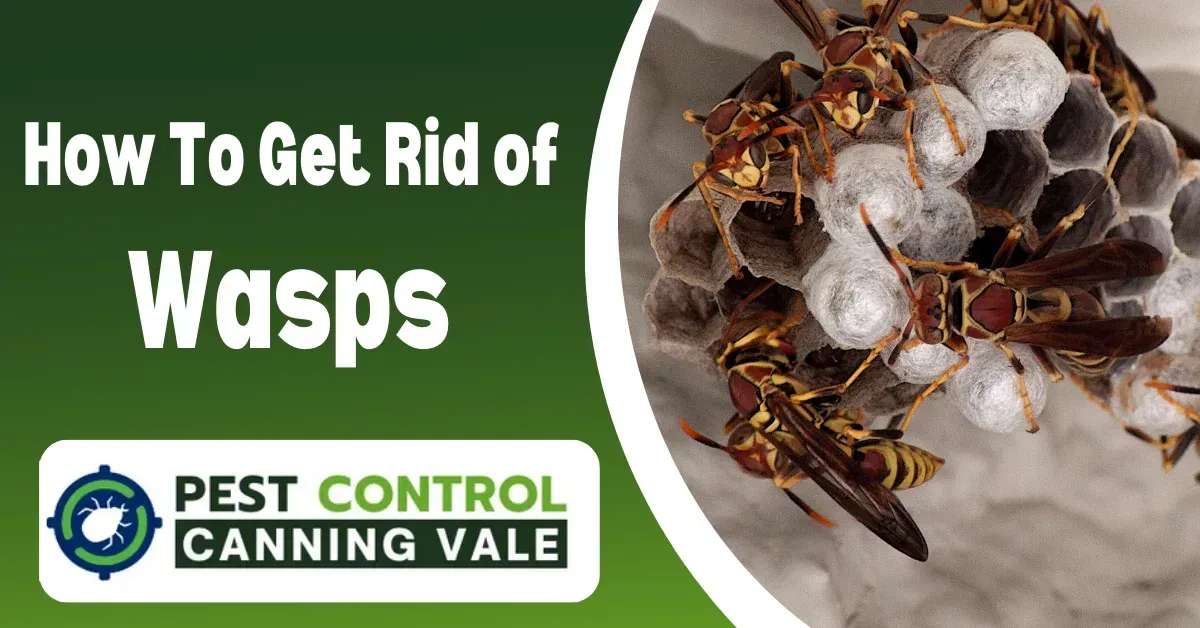PEST CONTROL CANNING VALE, THORNLIE, PARKWOOD, HARRISDALE, PIARA WATERS, WILLETTON AND SURROUNDING AREAS FOR OVER 10YRS
PEST CONTROL CANNING VALE, THORNLIE, PARKWOOD, HARRISDALE, PIARA WATERS, WILLETTON AND SURROUNDING AREAS FOR OVER 10YRS
Blogs

How to Get Rid of Wasps
The Ultimate Guide How to Get Rid of Wasps
If you’ve ever found yourself swatting away wasps during a picnic or while enjoying your garden, you know how bothersome and even dangerous these insects can be—especially for those who are allergic to their stings. But don’t worry, we’ve got you covered! This friendly guide is packed with information on identifying, preventing, and getting rid of wasps effectively, whether you’re a fan of DIY methods or prefer to call in the pros.
Getting to Know Wasps
What exactly are wasps?
Wasps are part of the Hymenoptera order, which includes bees and ants. They’re easily recognizable by their narrow waists and smooth bodies. Unlike bees, wasps can sting multiple times, making them a bit more daunting. There are several types of wasps, each with unique behaviors and nesting preferences. Let’s meet a few:
Paper Wasps: These guys build umbrella-shaped nests in sheltered spots like eaves or attics. They’re generally less aggressive but will defend their nests vigorously if threatened.
Yellow Jackets: Known for their painful stings, yellow jackets are quite aggressive and build nests in the ground or enclosed spaces like wall voids.
Hornets: Larger than their wasp cousins, hornets construct big, football-shaped nests in trees or occasionally on buildings. They’re more aggressive than paper wasps but not as much as yellow jackets.
Spotting a Wasp Infestation
It’s best to catch a wasp problem early. Here are a few signs that you might have unwelcome guests:
Increased Wasp Activity: Lots of wasps buzzing around your property, especially near potential food or water sources.
Visible Nests: Keep an eye out for nests in protected areas like under eaves, in attics, or even underground.
Buzzing Sounds: Persistent buzzing from hidden spots like wall voids or attics could signal a nest.
DIY Wasp Removal Tips
While severe infestations often require professional help, there are several DIY strategies you can try to tackle wasps:
Wasp Prevention: Start by sealing up entry points like cracks or broken vents. Keep food covered outdoors and promptly clean up any spills. Secure your garbage bins and eliminate standing water sources to make your property less inviting.
Wasp Traps: You can make a simple wasp trap using a cut plastic bottle with sugar water and dish soap, or buy commercial traps and place them strategically around your property.
Wasp Repellents: Natural repellents can be helpful. Consider using essential oils like peppermint, clove, or lemongrass, or plant wasp-repelling plants like mint or citronella.
Wasp Nest Removal: If you need to remove a nest, do it in the evening when wasps are less active. Wear protective clothing and consider using a wasp-specific insecticidal spray. After treatment, carefully remove and dispose of the nest.
When to Call the Professionals
For serious infestations or if DIY methods don’t cut it, it’s best to call in professional wasp pest control services. Here’s what you can expect:
Inspection: A pest control expert will thoroughly inspect your property to gauge the extent of the infestation and locate all nests.
Treatment Options: Professionals use a mix of powerful treatments like insecticidal sprays, dust insecticides, and aerosol sprays, often combining several approaches for the best results.
Nest Removal: With the right tools and expertise, professionals will safely remove wasp nests and offer follow-up treatments to ensure all wasps are gone for good.
Prevention Tips: After treatment, experts can provide tips on how to prevent future infestations through regular inspections, good sanitation practices, and proper yard maintenance.
Safety and Prevention
Safety is crucial when dealing with wasps. Always wear protective gear during treatment, ensure proper ventilation if using chemicals, and follow all instructions carefully. To prevent future infestations, maintain your home by sealing entry points, installing screens, repairing any exterior damage, and managing your yard to eliminate potential wasp havens.
By understanding wasps and taking proactive steps, you can enjoy your outdoor spaces without the worry of these stinging pests. Whether you choose to handle things yourself or enlist professional help, this guide is here to assist you in keeping your environment wasp-free. Happy wasp managing!
Frequently Asked Questions (FAQs)
1. How do wasps enter homes?
Wasps can enter homes through cracks, gaps, and openings in the foundation, walls, and roof. They can also gain access through open windows and doors, as well as vents and chimneys.
2. Are wasps harmful to humans?
Yes, wasps can be harmful to humans. Their stings can cause pain, swelling,
Don't let wasps ruin your peace of mind. Call Canning Vale pest control Today (08) 6373 2514
Canning Vale Pest Control
Nicholson Ct, Canning Vale WA 6155
(08) 6373 2514
Open 24 hours

